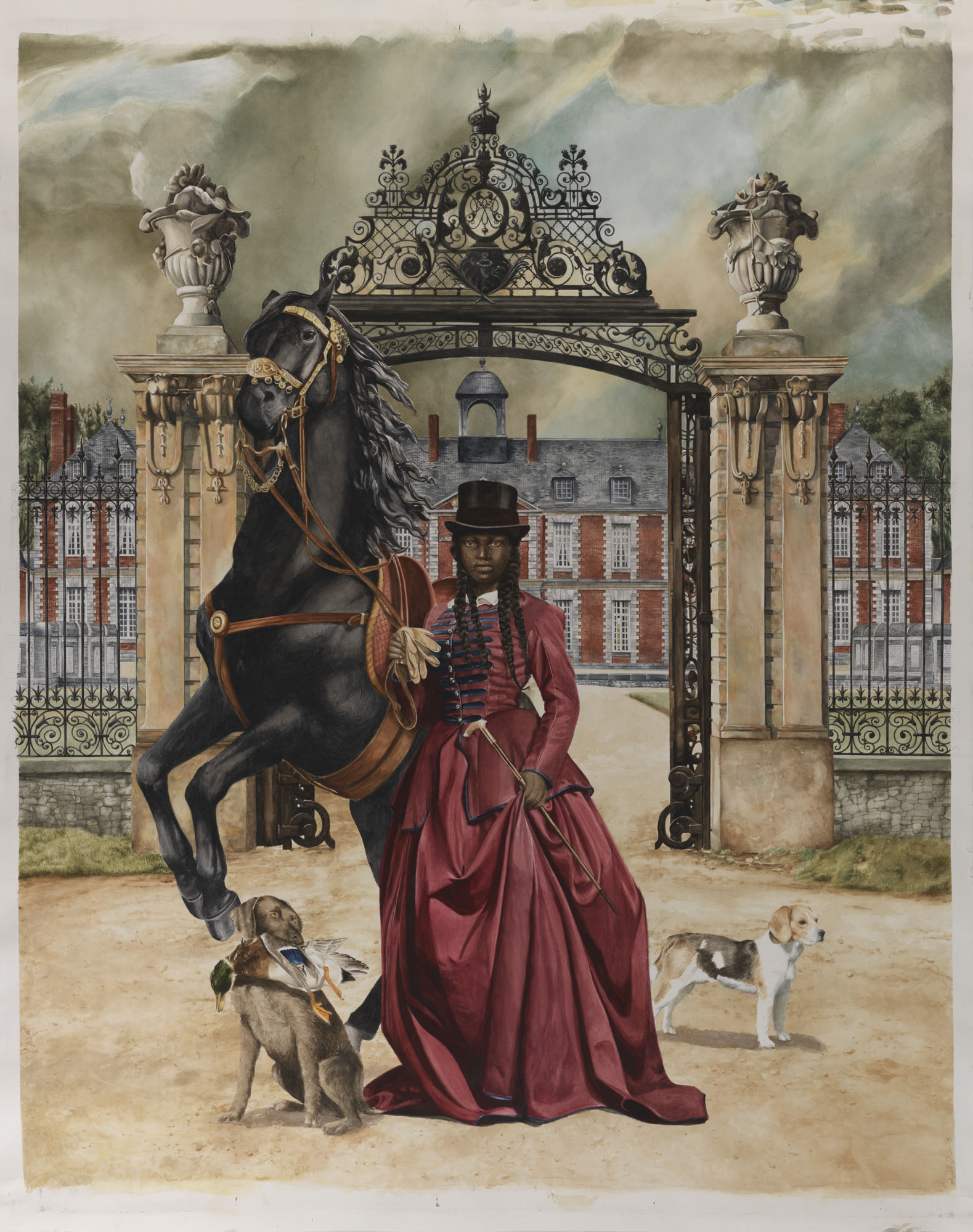
Riding Places
Elizabeth Colomba
Riding Places is the first work to be completed in a series that explores the tenuous relationship between the black body and leisure in representational works. The entire series consists of four large-scale watercolors and one large oil painting.
Monique Long wrote on Colomba’s work: “In presenting gorgeous figurative paintings, there is the possibility that they will be perceived as simply beautiful. I find this interesting because it doesn’t necessarily happen in other mediums. For example, you can listen to a song by Nina Simone and appreciate the beauty of her composition, melody, and voice but also recognise the complexity – her form of activism. Work like Elizabeth’s can be deceptively simple. The viewer is first drawn in by the lush canvases and then you might see all these ideas she’s proposing. “
According to Colomba: “Being of Martinique descent but born and raised in France has shaped and influenced my perception of myself and identity. This dual background has pushed me to explore the totality of social experience and fuse my two worlds (French and Caribbean) in my work. While acknowledging the past, I wish to reshape the narratives and bend an association of ideas so that a black individual in a period setting is no longer synonymous with subservience and, by extension, does not instill fear or mistrust. The subject becomes the center of her own story and hastens it forward.
Creating pieces that reference Old Masters’ techniques while incorporating Western themes implies a precontemporary creation, an egalitarian existence in a story from which the black body is almost always absent. When a work of art depicts a figure (mythical, biblical, allegorical) the narrative is identified with the help of pictorial codes. Eros would be recognized by his arrows, Psyche is associated with the butterfly, and so forth. Thus, skin color no longer dictates the story of the protagonist but transcends it. The viewer no longer ponders status but rather representation, iconography.
Reclaiming history and anchoring the spirit of the African diaspora by redefining its place is a difficult and ambitious task that requires patience and visual reappropriation. It could be attained by resetting one’s mind and establishing a different visual landscape devoid of servile narrative. By generating an environment for my subjects to inhabit a space that honors their presence and place in and through culture and time allows me to redefine not only how black people have been conditioned to exist, but also how black people have been conditioned to reflect upon themselves.”
Artist
Date of Birth
(b. 1976)
Date
2019
Medium
Watercolor on paper
Dimensions
65 x 51 1/2 in. (165.1 x 130.81 cm.)
Accession #
2019.39
Credit Line
Museum Purchase
Copyright
© Elizabeth Colomba / Artists Rights Society (ARS), New York
Category
Subject
More by
We're so excited you're planning to visit PAFA!
Make time for art — visit us Thursday to Sunday.
Before reserving your tickets, please review helpful information about museum hours, accessibility, building access, and special admission programs.
If you have any questions, feel free to reach out to us at visitorservices@pafa.org — we’d love to help!